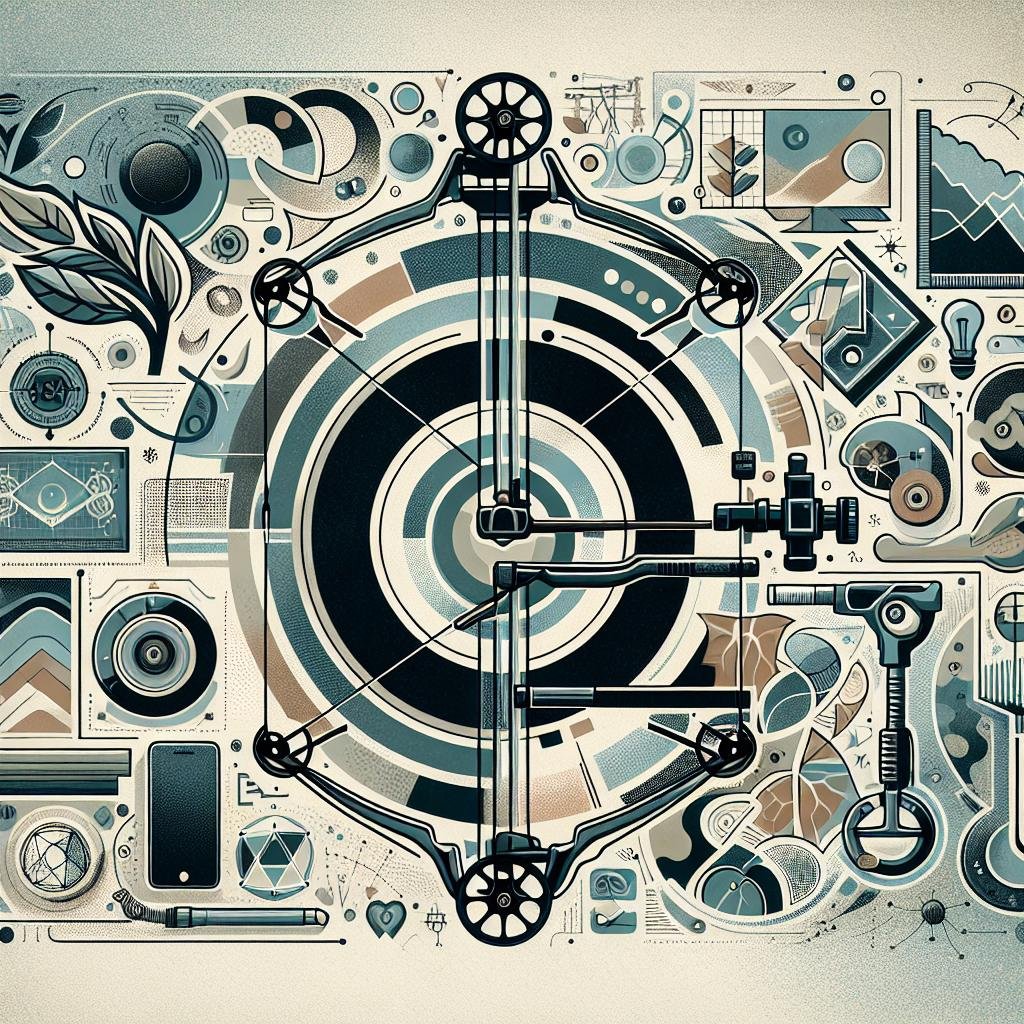Title: Steady Your Aim: A friendly Guide to Installing a Bow Stabilizer
If you’ve ever found yourself in the midst of a perfect bowshot, only to feel that pesky wobble threatening your aim, you’re not alone! For archers, both novice and seasoned alike, achieving precision is paramount—and that’s where a trusty bow stabilizer comes into play. This simple but effective accessory can transform your archery experiance by enhancing balance, reducing vibrations, and ultimately boosting your confidence as you take aim. In this friendly guide, we’ll walk you through the step-by-step process of installing a bow stabilizer, demystifying the mechanics along the way. So grab your gear, and let’s steady that shot together—your road to a more stable archery experience starts here!
Choosing the Perfect Bow Stabilizer for Your Needs
Choosing the right bow stabilizer is essential for enhancing your archery experience. You’ll want to consider factors such as weight, length, and design to ensure it best fits your shooting style. A heavier stabilizer can provide increased stability but may affect your overall maneuverability. On the other hand, a lighter stabilizer can be easier to handle for long sessions. Think about the environment in which you’ll be shooting — whether it’s a range or the great outdoors can influence your decision. Additionally, the aesthetics of your stabilizer can complement your bow, so don’t hesitate to choose a design that reflects your personal style.
When evaluating options, here are some key features to keep in mind:
- Material: look for durable materials such as carbon fiber or aluminum that are lightweight yet sturdy.
- Adjustability: Select a stabilizer that allows you to customize its angle and length for your preferred shooting position.
- Vibration Dampening: Consider models equipped with technology that minimizes vibration during release.
Furthermore, understanding the differences in stabilizer types can guide your decision. Here’s a speedy comparison of popular stabilizers:
| Type | Pros | Cons |
|---|---|---|
| Long Stabilizer | Maximizes stability, ideal for target shooting | Heavier, less agile |
| Short Stabilizer | More portable, quick to maneuver | Less stability at longer distances |
| Side Stabilizer | Balances bow for better aiming | Complex installation, may require extra setup |

Essential Tools and Preparations for a Successful Installation
To ensure a smooth and efficient installation of your bow stabilizer, having the right tools at hand is crucial. Here’s a list of essential items you’ll need:
- Allen Wrenches: Typically included with your stabilizer, these are used to secure the stabilizer to your bow.
- Screwdrivers: Both flathead and Phillips options are useful for adjusting any screws during the installation.
- Tape Measure: This helps to determine the optimal length for your stabilizer based on your personal preference.
- Level: Ensures that your stabilizer is perfectly aligned for better accuracy.
- Torque Wrench: For precise tightening without over-stressing the components.
Planning is equally notable to ensure everything goes off without a hitch. Before beginning the installation, take the time to set up your workspace. here’s a quick checklist:
| Preparation Step | Status |
|---|---|
| Gather all tools and materials | ✔️ Ready |
| read the stabilizer manual | ✔️ Done |
| Identify required adjustments | ✔️ Clear |
| Choose a distraction-free area | ✔️ Selected |

Step-by-Step Guide to Attaching Your Stabilizer with ease
Installing your bow stabilizer can be a straightforward and enjoyable process,especially when you follow a few simple steps. First, gather your tools: you’ll need a wrench, a screwdriver, and, of course, your stabilizer. Start by removing the bow string from the bow’s riser. This ensures that you have a clear workspace to attach your stabilizer securely. Once the string is cleared, locate the stabilizer mounting hole, which is typically found at the front of the riser.If your stabilizer has different weights or components,feel free to customize it according to your preferences for balance and feel.
Next,align your stabilizer with the mounting hole and insert the screw that holds it in place. Make sure it’s tight enough to prevent any movement but not so tight that it risks damaging the bow. Double-check the alignment of the stabilizer; it should sit parallel to the ground for optimal performance. Once everything is secure, reattach the bow string and give everything a final check to ensure there’s no interference. Now you’re all set to enjoy improved stability during your shooting sessions!

Fine-Tuning Your Stabilizer for Optimal Performance and Accuracy
Once your stabilizer is installed, its time to focus on fine-tuning it for optimal performance and accuracy. This stage is crucial becuase even the smallest adjustments can make a significant difference in your shooting experience. Start by checking the balance of your bow. A well-balanced bow helps in reducing hand torque and stabilizes your shot. Experiment with the placement of weights on your stabilizer to find the perfect center of gravity. You may want to try adding or removing weights at various points—limbs, ends, or pivot points—to see how it affects your aim and handling.
Next, consider the length of your stabilizer, as it plays a pivotal role in stability. Longer stabilizers generally provide more stability but can be cumbersome, while shorter ones offer better maneuverability in tight spaces. depending on your style of shooting, you may also experiment with vibration dampening materials to minimize movement upon release.Use the following checklist to help guide your adjustments:
- Balance Check: Ensure your bow feels cozy in your hand.
- Weight Distribution: Test different configurations of weights.
- Stabilizer Length: Assess the trade-off between stability and maneuverability.
- Vibration Dampening: Experiment with different materials.
| Stabilizer Length | Stability | Maneuverability |
|---|---|---|
| Short (< 12 inches) | Low | High |
| Medium (12-24 inches) | Moderate | moderate |
| Long (> 24 inches) | High | Low |
Q&A
Q&A: How to Install a Bow Stabilizer
Q1: What is a bow stabilizer, and why do I need one?
A1: Ah, the magical world of bow stabilizers! Think of them as the secret weapon of archers. A bow stabilizer helps balance your bow, absorb shock, and improve accuracy. If you want to feel steadier than a tightrope walker on a calm day, a stabilizer is your trusty sidekick!
Q2: What tools will I need to install the stabilizer?
A2: Great question! The tools you’ll need are simple—just a wrench or screwdriver, depending on your stabilizer type. And don’t forget your bow! A little bit of patience and attention will serve you well, too. You’re ready to become a DIY superstar!
Q3: How do I choose the right stabilizer for my bow?
A3: It’s like picking the perfect accessory for an outfit! consider factors such as weight, length, and vibration dampening features. If you’re unsure, any local archery shop will be happy to assist you. They might even let you try some out—bonus points for testing like a pro!
Q4: Alright, I’ve got my stabilizer. What’s the first step in the installation process?
A4: First things first, let’s get grounded! Make sure your bow is unstrung and safely secured. This prevents any surprises during installation—no one likes an unexpected “surprise!” Next, locate the stabilizer hole, usually at the front of the riser. It’s like a cozy little home for your stabilizer!
Q5: How do I attach the stabilizer?
A5: Time for the fun part! Simply screw the stabilizer into the hole you found earlier. Make sure it fits snugly but doesn’t go overboard; we don’t want it turning into a wrestling match! Use your wrench or screwdriver to tighten it, but not too tight—remember, this isn’t a torque championship!
Q6: I’ve installed the stabilizer. Now what?
A6: You’re a stabilizer installation ninja! take a moment to admire your handiwork. Now, it’s time for a little bow-tuning dance! Grab your bow, and test the feel and balance. Adjust the stabilizer as needed. Don’t be afraid to experiment with the weight and length!
Q7: Do I need to make adjustments after my first few shots?
A7: Absolutely! Think of it as an evolving friendship. After a few practice shots, pay attention to how your bow feels. If it feels unsteady, or if your shots are slightly off, consider adjusting the stabilizer’s weight or moving it slightly forward or backward to perfect your aim.
Q8: Any final tips for a stabilizer newbie?
A8: You bet! Stay patient, and give yourself grace as you adjust. Practice is key. And remember, every archer has a unique style, so find what works best for you. Celebrate the small victories, and soon you’ll be the envy of all archers with your flawless aim and sturdy setup!
Now that you’re armed with this knowledge, you’re ready to tackle that bow stabilizer installation! Happy shooting! 🎯🏹
The Way Forward
As we wrap up our journey into the world of bow stabilizers, we hope you feel empowered and ready to take on the challenge of enhancing your archery experience.Installing a stabilizer may seem daunting at first,but with the right tools,a dash of patience,and our step-by-step guide by your side,you’re now equipped for success. Remember, every expert was once a beginner, and each shot you take with your newly balanced setup is a step towards becoming the archer you aspire to be.
As you head to the range, take a moment to appreciate the artistry of your bow – its beauty lies not just in its craftsmanship but also in how you adapt it to suit your personal style. whether you’re aiming for that bullseye or simply enjoying the great outdoors,may every pull of the string bring you joy and fulfillment.
So go ahead, tighten that stabilizer, nock your arrow, and let the adventure unfold. Happy shooting, and may your shots always soar true!

